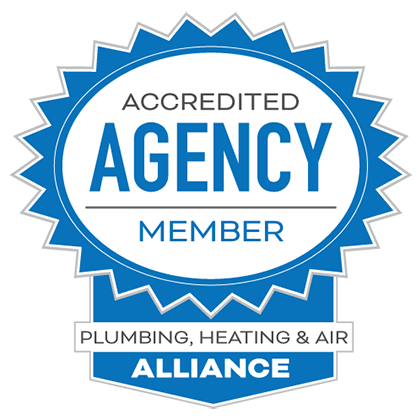As a heating & cooling contractor, managing a website can be a headache. However, over the past number of years, 3rd party website builders have made it possible for the average person to create DIY websites. Furthermore, the emergence of website theme sellers, who sell ready-made WordPress themes that foster a plug-and-play dynamic, has made websites more effortless than ever to launch.
However, the question for HVAC companies is not whether your website can launch but rather whether it can serve its marketing purpose, which is to generate HVAC leads and increase online presence. Web templates often discourage optimal ranking positions on Google because several reasons are mainly technical.
Should I Use an HVAC Website Builder?
The short answer is no. To expand on the reasoning, visually appealing websites (as template websites often can be) do not necessarily translate to rankings. The behind-the-scenes coding like HTML, schema markup, and customized script development have far more to do with a website’s ultimate Google ranking than does its front-end conceptualization.
There are also instances where HVAC contractors receive free templates from one of their parent organizations. Frequently these aren’t even attractive and are therefore the worst of all worlds. They are essentially duplicate sites from parent companies and discourage your company from branching out to create an exclusive web presence that will serve as a digital asset for years to come. Here’s why you shouldn’t use a website builder:
- Visual appeal alone does not translate to higher rankings
- Many template sites are code duplicates which are bad for SEO
- Template sites discourage long-term control and asset attainment for contractors
What is Codebase?
A website’s codebase is its back-end, for lack of a better term. All the programming languages like HTML, CSS, schema markup, and microdata exist. Regardless of their industry, the average person is not going to understand a page of source code for a particular website. To most, the page looks gibberish, but to Google, it is the foundation for how they perceive the page and ultimately how they choose to rank it on a relative SERP.
When a visually gorgeous website doesn’t rank well, 99% of the time, the culprit is a poor codebase. Unfortunately, you cannot tell the quality of a site’s codebase from its front-end visualization. It takes a person with knowledge of programming and web design to properly assess the codebase for any webpage.
- Codebase is the back-end of a webpage
- Sites with appealing front-ends don’t always have a sufficient codebase
- Web code looks like gibberish to the average person, but Google understands it perfectly
Schema Markup Best Practices
One of the most important ranking factors for a website is its usage of schema markup — a microdata language that helps Google parcel specific data points about a given website. Sometimes template websites do have one or two instances of schema code, but they are almost always the most basic forms.
To stand out from competitors, you want hundreds of instances of schema markup within your codebase. Everything from the company address to the industry category should be marked up. You can even go as far as marking up geo-coordinates which can help expand your service area beyond the address listed on the page. Schema markup like this is more challenging to execute, but that’s why it separates you from the competition. Here’s what you should know about template schema code:
- Most schema markup on templates are extremely basic
- Marking up your website as a “website” is hardly going to make a difference for Google
- There are hundreds of schema codes you can implement to separate yourself from competitors
Keyword Relevant URLs
Another issue with templates is their default URL permalinks. Even on WordPress, which is a CMS that most major SEO agencies use (including us) … the default permalinks are keyword-less, and therefore discouraging to Google. The advantage with WordPress is that this default operation can be altered and customized so that you can make the URL anything you want it to be and maximize keywords.
Frequently, free website templates will default to poorly constructed URLs that lack keywords. A poor URL structure is a significant SEO problem and cannot be remedied because of the constraints of a template. Simply put, you lack control over your URLs with many template-based websites. Research shows that URL relevancy is one of the primary ranking factors and an absence of it is a loss for your HVAC business.
- URLs with keywords help Google find the relevant webpage with ease
- Generic URLs are discouraging for SEO since they are harder to crawl and index
- URL relevancy is one of the primary Google ranking factors
A Collective Google Grade
When Google “grades” a website for ranking, it never looks at a single metric. Instead, it evaluates thousands of metrics concerning one another. That being said, a website with great content is not enough. The same is true for a website with an excellent front-end design. And yes, even websites with great back-end designs will be limited if other areas fall short. Therefore, when constructing the perfect HVAC website, it should never be about one thing.
That’s why templates are a terrible idea for contractors. To properly execute the pillars of successful SEO, you need complete control over your website or at least a team of people controlling it on your behalf. That means professional web designers, SEO specialists, content writers, and Google Maps optimizers. 2021 can be a successful year for your business, but the best way to make that happen is through custom web design, not web templates.
- Google looks at a variety of factors in context when grading a website
- A website that is great at one thing will not make it rank with an absence of others
- Custom websites provide greater control to execute the multitude of necessary SEO tasks
Podcast: Play in new window | Download





